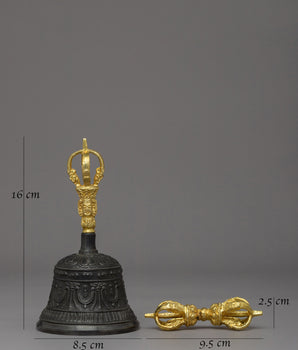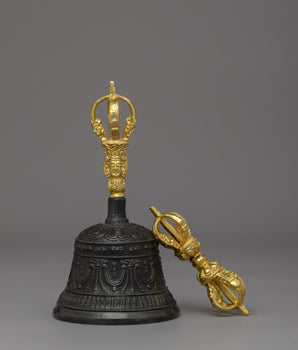Visualize yourself in a serene meditation hall with soft candlelight and the soothing sound of chanting. A string of beads, quiet witnesses to thousands of years of spiritual practice, lies in the palm of your hand. These are mala beads, peaceful journey companions of many Buddhists attaining enlightenment.

In Buddhist cultures, mala beads are considered sacred and appreciated as concrete symbols of devotion, understanding, and inner serenity. In this blog article, we'll explore the rich historical background of these little strands, examining their symbolism, cultural value, and place of origin in Buddhist communities around the globe.
Our goal is to explore the deep historical roots of Buddhist traditions in order to reveal the profound meaning behind mala beads. Readers will get a clearer grasp of how these simple threads have woven themselves into the very fabric of Buddhist practice, leading generations of seekers on the path to spiritual awakening, from their ancient beginnings to their contemporary revival.
Origins of Mala Beads
1. Early Buddhist Practices:
Mala beads reflect their roots in the early Buddhist tradition when they were essential tools for devotion and meditation. To improve attention and concentration during their spiritual pursuits, Buddhists used small strands of beads to count the repetitions of mantras or prayers in ancient ceremonies.
2. Influences from Hinduism and Other Traditions:
The use of beads in prayer and meditation is not exclusive to Buddhism; it has strong roots in a number of other spiritual traditions, such as Jainism and Hinduism. Hindus practice japa, which is the practice of repeating prayers or mantras. Devotees carry japa malas, which are similar bead strands used for counting the repetitions of sacred mantras.
3. Evolution of Mala Bead Materials:
As craftsmanship has advanced and cultural preferences have changed over time, so too have the materials used to make mala beads. Originally made from simple strings of wood, bone, or seeds, malas have evolved into beautifully crafted objects embellished with precious metals, gemstones, and crystals. This development follows the path of Buddhist practice itself, from its modest beginnings to its thriving manifestation in various cultural situations.
Symbolism and Significance
1. Spiritual Symbolism:
In Buddhist philosophy, mala beads have profound symbolic meaning and represent the core principles of the faith. Every bead symbolizes a mindfulness moment and a step towards enlightenment. The mala's circular form represents the cyclical aspect of life and serves as a reminder to practitioners of everything's changing circumstances. Bead counting additionally fosters loving-kindness toward oneself and others, which in turn promotes compassion and a sense of oneness.
2. Practical Uses:
In Buddhist practice, mala beads have uses beyond their symbolic significance. They offer a concrete means of keeping records of the number of times a mantra or prayer is repeated, which can help to improve focus and attention during meditation. In addition to aligning with the breath, the rhythmic movement of the fingers along the beads encourages inner peace and profound relaxation. Mala beads so serve as priceless guides for individuals traveling inward, assisting them in reaching a level of increased consciousness and spiritual understanding.
3. Cultural Significance:
Mala beads are deeply rooted in Buddhist culture, influencing numerous aspects of daily practice and religious life. They are essential to religious rituals because they are used to honor spiritual masters, ask for blessings, and express devotion. Mala beads are used as religious and ceremonial symbols to decorate shrines and altars during festivals and celebrations. Mala beads are used by individuals as tools for prayer, self-reflection and self-transformation as part of their daily devotional routines. Mala beads so take on double the role of religious artifacts and are powerful accelerators for spiritual growth and inner enlightenment.
Regional Variations and Traditions

1. Tibetan Buddhist Malas:
In contrast to malas from other traditions, Tibetan Buddhist malas have unique characteristics. Most notably, they usually have 108 beads, which is a sacred number in Tibetan Buddhism that represents the various paths leading to enlightenment. These Malas often include guru beads, or marker beads, which denote the start and finish of a meditation session. Furthermore, Tibetan Malas might have included charms or tassels with spiritual meaning, including representations of Buddhist deities or auspicious symbols.
2. Mahayana Buddhist Malas:
There are many distinct practices and convictions surrounding mala beads in Mahayana Buddhist traditions, and these traditions and beliefs are adapted to fit particular rituals and contexts of culture. The size, shape, and design of the malas used in Mahayana traditions can vary, representing the range of practices found across this wide tradition. While some Mahayana practitioners maintain to traditional patterns similar of those found in Tibetan Buddhism, others may utilize malas made of different materials or with fewer beads. The rich tapestry of Mahayana mala bead traditions is further enhanced by regional variances and cultural complexities, which emphasize the dynamic character of Buddhist practice throughout various communities and cultures.
Influence on Contemporary Practice
1. Revival in Modern Times:
A growing understanding of meditation and mindfulness practices has led to a significant rise in interest in mala beads among modern practitioners in recent years. In today's fast-paced world, people are looking for real tools to help them reconnect with themselves and the present moment. Mala beads offer one such tangible tool as they help people reduce stress, find inner peace, and nurture spiritual growth. Their tactile sense and rhythmic counting offer a stabilizing anchor in the midst of everyday chaos, cultivating a sense of peace and focus that resonates to contemporary seekers.
2. Cultural Appropriation and Respectful Practice:
The significance of cultural appropriation must be taken into account in conjunction with the rise of interest in mala beads. There is a chance that the cultural and spiritual importance of these sacred threads will be lost or misrepresented as they gain more and more popularity in popular culture. Practitioners must approach mala bead traditions with humility, respect, and a thorough awareness of their cultural and historical background. This involves honoring the traditions that mala beads originate from, supporting communities and craftsmen who make them ethically, and engaging in activities that are consistent with one's own religious beliefs.
Conclusion
In the process of studying mala beads in Buddhist traditions, we have discovered a wealth of cultural importance, symbolism, and historical background. From their beginnings in primordial Buddhist rituals to their development in modern circumstances, mala beads have functioned as concrete manifestations of devotion, understanding, and spiritual growth. We've explored the special qualities of Mahayana and Tibetan malas; we've studied their applications and spiritual symbolism, and we've thought about how they've influenced modern practice. One thing has remained constant throughout: mala beads are deeply ingrained in Buddhist traditions and have guided countless numbers of practitioners toward nirvana.
As you embark on your own mala bead adventure, keep in mind that each bead holds a world of opportunities and serves as a constant reminder of how everything is interconnected. We are woven into the enormous fabric of life, just as each bead is a part of a greater whole. May we weave a path of wisdom and compassion with every conscious breath and every moment of the present, led by the timeless teachings of Buddhism and the peaceful rhythm of mala beads.










